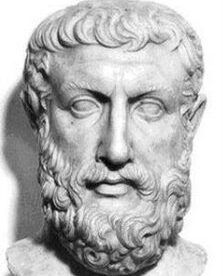
Available from TAN Books1 and Amazon
Book Length: 192 pages
Few saints have captured the imagination in the way that St. Thérèse has. Between her hidden existence during her earthly life and the popularity she achieved after her mortal span there is a juxtaposition, but not a contradiction. As the blessed doctor St. Jerome wrote, “It is possible to seek glory by avoiding it” (Letter XXII). Are these words not appropriate for the Little Flower, who by means of the “Little Way” revealed to her did precisely this? By seeking first the kingdom of God she not only became a glowing ornament of the eternal city, but also obtained for herself a glory here below which outshines the wavering names of those whom the world deems great.
When reading this work, the continuing fame it has received for well over a hundred years becomes apparent. The author writes in a manner so attractive that it is difficult not to be taken in by her holy charm, as she paints a portrait of her memories resplendent with the abundant life promised us in the Gospel by Christ. Her childhood, for instance, was really quite idyllic in a way that many of us will never understand, for she was raised by holy parents and devout siblings. This did not mean that she was somehow exempt from crosses at this stage—quite the contrary, as the loss of her mother Zelie at the mere age of four proves. Yet in this, as with the crosses she experienced later in her life, the reader comes to realize—as St. Thérèse herself writes in this little work—how wonderfully her sorrow was turned to joy.
In the Martin house, it could truly be said that they believed “only one thing is necessary” (Luke 10:42), this being the love of God. It was from their fidelity to Christ the King and Mary the Queen that their simple home was marked with true nobility, that being virtue. The saintly author touched on the authentic spirit of nobility when reflecting on her pilgrimage to Rome, for among the pilgrims she noted many aristocrats—who were probably quite gallantly dressed for the occasion, and therefore all the more impressive to the eyes.
She relates to us that:
The words of The Imitation, ‘Do not be solicitous for the shadow of a great name” (Imit., III, xxvi, 2) were not lost on me, and I realized that real nobility is in the soul, not in a name.
(69)
Such was her reaction, for she had been brought up to admire holiness, not “high-sounding titles” (as she herself termed them) nor worldly riches. Thus, that corrupting influence of worldliness, which marches readily into the households of most today in varying slithering forms like the heads of the fabled hydra, was never quite known to her as it has been (in most cases) to ourselves. And how this “ignorance” did her so well!
Yet she, through her life of prayer, was able to understand the powerful design of Providence in this:
He did not wait for me to love Him with a great love, like Magdalene’s, but made me see tat He had loved me first, with an infinite providence, so that now I may love Him in return in return even unto folly.
(47)
Where others would have fallen into pride and even lukewarmness, she chose further humility. The author realized that she was not the originator of the Christian joy which permeated her soul, the peace that the world cannot give. She realized that God, by giving to her all those excellent aids to sanctification from the earliest age, really had prevented her from experiencing the worst thing one can experience: grave sin. In a way, the language the good saint uses here is reminiscent of how Blessed Duns Scotus described the nature of the Immaculate Conception—an extraordinary grace that took the form of a preventive love—which, in the case of the Holy Virgin, was exercised only once;2 but with the case of St. Thérèse in view, one can find similar, although rare, examples of saints who were granted the lesser favor I am referring to. The most renowned and glorious among such persons are St. Joseph and St. John the Baptist, who were also granted extraordinary graces, as both Scripture and Tradition attest.
Another case was that of St. Gemma Galgani, whose biography I have reviewed on this website.3 She too had a pious upbringing, yet was likewise tried by the loss of parents at a young age. As in the case of St. Thérèse, it is apparent that the blessing of pious parents was the human instrument of this preventive love, if I may so write. Though this upbringing did not eliminate the capacity for these holy women to commit sin, such an invaluable blessing tremendously aided them in their personal battles against the world, the flesh, and the devil. The Wise Man’s saying that “A young man according to his way, even when he is old he will not depart from it” (Proverbs 22:6) takes on a happy significance in the case of these souls.
As she matured, St. Thérèse obtained a more excellent grasp on the spiritual life. Reporting on the view she held of herself as she wrote this book in a humble convent cell, she relates to the reader that:
I think of my soul as a piece of waste ground and ask Our Lady to take away the rubbish of my imperfections and then built a spacious tabernacle there, worthy of Heaven, adorning it with her own loveliness.
(104)
Thus this soul understood, as all truly pious souls do, that the way to Jesus Christ is through the Blessed Mother. What confidence she places in this reginal intercessor, and how we ought to learn from her example! Too many of us, despite knowing the words Christ pronounced on His dying lips to “Behold thy mother” (John 19:27). This command of love was given to St. John, true, but not for him alone—for his place at Calvary is our place as well.
Throughout the book our saint leaves us with sublime words; among them I quote the following, which I found particularly moving in my own reading:
One can fall, I know; there may be infidelities, yet Love knows how to turn all things to profit, quickly consuming everything which might displease Jesus, and leaving at the bottom of one’s heart nothing but deep and humble peace.
(108)
As the learned philosopher Joseph de Maistre commented that “there is no disorder that ETERNAL LOVE does not turn against the principle of evil”4 in the political sphere, so St. Thérèse comments concerning the realm of the spiritual life. The analogy, after all, between the spiritual state of a nation and an individual is an appropriate one, for man is by necessity a social (and therefore) political being, as Aristotle taught. Men and women are individuals, but they exist in the context of the family, which forms the foundation of society. Therefore the warning of the Psalmist that “Unless the Lord keep the city, he watcheth in vain that keepeth it” (Psalms 126:1) applies not only to the city as commonly understood, but also the cities of our souls.
If we wish our societies, so ravaged by infidelity, to know once again the peace of Christ the King, we must begin with ourselves. The method of confidence in the love of God practiced by St. Thérèse is not restricted for souls as gifted as herself, but is open to all. Do not dismay if you were been raised by non-Catholic parents, or even if you were raised by Catholic parents who were negligent of their duties towards you. It is true that on some level they have wronged you, but have charity towards them, for we are forgiven only if we forgive others. Let us abandon the arguments of despair and the dwellings on sins that cannot be undone. Instead, let us have confidence, and “love shall turn all things to profit” indeed.
This is a book which should be read by all Catholics, for it contains an example of sanctity both consoling and admirable, especially in our times. The character of such a great saint will never make one recoil out of a misplaced fear. Rather, her gentle voice disarms this secretive pride, and invites one to read the intimate record of her magnificent life.
- For reference, I am reviewing the edition of this work which has been published by TAN Press.
I have since been made aware of an unabridged translation of the autobiography, which can be found here: https://www.amazon.com/gp/product/B00FBY4BGE/ref=as_li_tl?ie=UTF8.
-
In his Letter to the Romans (5:12), St. Paul had taught “it was through one man (Adam) that sin came into the world, and through sin death, and thus death has spread through the whole human race because everyone has sinned.” Paul is telling us that everyone inherits original sin and its consequences. Therefore Mary needed to be redeemed. But Christ had not yet come to accomplish the redemption.
Duns Scotus pushed this obstruction from the path by showing that instead of being excluded from the redemption of the Savior, Mary obtained the greatest of redemptions through the mystery of her preservation from all sin. This, explained Scotus, was a more perfect redemption and attributes to Christ a more exalted role as Redeemer, because redeeming grace which preserves from original sin is greater than that which purifies from sin already incurred.
Consequently, Christ was Mary’s Redeemer more perfectly by preservative redemption in shielding her from original sin through anticipating and foreseeing the merits of his passion and death. This pre-redemption indicates a much greater grace and more perfect salvation.
Brother John M. Samaha. “John Duns Scotus on the Immaculate Conception.” University of Dayton.
udayton.edu/imri/mary/j/john-duns-scotus-on-the-immaculate-conception.php.
- “Book Review: The Life of St. Gemma Galgani by Venerable Fr. Germanus, C.P.” https://parmenidean.is/wp/?p=1399.
- Considerations on France. Translated by Edward Maxwell III. Maistre: Major Works, Vol. I. Imperium Press. p. 76.
